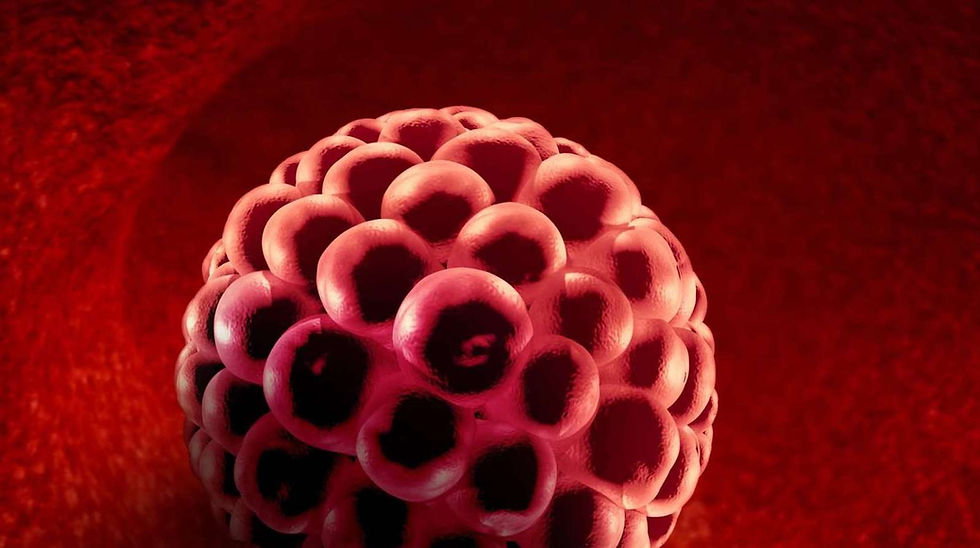Endometriosis and Acupuncture
- Dr. Jaime DeGuzman, DTCM, L.Ac

- May 25, 2023
- 3 min read
According to the World Health Organization (WHO), endometriosis affects roughly 10% (190 million) of reproductive age women and girls globally.

Introduction
Endometriosis is a condition where tissue similar to the endometrium – or lining of the uterus grows outside the uterus. While in most cases endometriosis can be found in the ovaries and fallopian tubes, in more severe cases endometriosis can be found in the gastrointestinal tract, urinary tract, soft tissues, and chest.
These endometrial cells, that for unknown reasons have traveled outside the endometrium, respond to the monthly hormonal changes of a woman – including menstruation. When this endometrium tissue that is now attached to the ovaries, fallopian tubes or other organ, begins to bleed, there is no easy way for the blood to leave the body. This can not only create severe menstrual pain, but it can also be a cause of infertility.
An early study published by The American Journal of Obstetrics and Gynecology concluded that about 25 to 50% of infertile women have endometriosis, and 30 to 50% of women with endometriosis are infertile. Although the prevalence of endometriosis has not increased in the last 30 years, 6 to 8% of women are being diagnosed with endometriosis.
“About 25 to 50% of infertile women have endometriosis, and 30 to 50% of women with endometriosis are infertile”.
While most women diagnosed with endometriosis suffer from dysmenorrhea or painful menstruation (60–80%), chronic pelvic pain (40–50%), dyspareunia or painful intercourse (40–50%), infertility (30–50%), about 20–25% of patients are asymptomatic.
There are several studies showing how endometriosis can negatively affect fertility. One study found that:
“When the endometrium of women with endometriosis has elevated levels of IgG and IgA antibodies (autoantibodies to endometrial antigens) and lymphocytes, the receptivity and embryo implantation may be altered”
It has also been documented that women with endometriosis may have endocrine and ovulatory disorders. These abnormalities may include luteinized unruptured follicle syndrome, impaired folliculogenesis (maturation of the ovarian follicle), luteal phase defect, and premature or multiple luteinizing hormone (LH) surges.
Unfortunately, modern medicine has little to offer to treat endometriosis. A study published in 2006 by the Fertility and Sterility journal titled “Endometriosis and Infertility” mentioned that:
“Patients with endometriosis who are interested in fertility may gain limited benefits with medical therapy".
The study, which did not include alternative medicine - such as acupuncture, continued by saying that:
“Although theoretically advantageous, there is no evidence that the combination of medical and surgical treatments can significantly enhance fertility, and it may unnecessarily delay further fertility therapy".
According to the World Health Organization (WHO), “No treatments cure the disease”. The focus of conventional medicine is to manage the pain by prescribing non-steroidal anti-inflammatory drugs (NSAIDs) and analgesics (painkillers) like ibuprofen and naproxen. In addition to drugs, allopathic medicine also provides contraceptive methods such as: birth control pills, hormonal intrauterine devices (IUDs), vaginal rings, implants, etc. Unfortunately, none of these methods are suitable for those wanting to get pregnant.
Endometriosis and Acupuncture
Few randomized clinical trials have looked at the efficacy of acupuncture in treating endometriosis and its related pain. In 2017 Plos One, a peer-reviewed open access mega journal, published a systematic review and meta-analysis titled “Effects of acupuncture for the treatment of endometriosis-related pain”. The study concluded that: “Few randomized, blinded clinical trials have addressed the efficacy of acupuncture in treating endometriosis-related pain. Nonetheless, the current literature suggests that acupuncture reduces pain and inflammation (serum levels of CA-125), regardless of the control intervention used”.
Another systematic review and meta-analysis published in 2018 by the International Journal of Gynecology & Obstetrics concluded that:
“Numerous complementary treatments have been used to alleviate the symptoms of endometriosis, but only acupuncture has demonstrated a significant improvement in outcomes”.
“Numerous complementary treatments have been used to alleviate the symptoms of endometriosis, but only acupuncture has demonstrated a significant improvement in outcomes”.
An article published by the Endometriosis Foundation of America where several studies were cited, concluded that acupuncture can reduce pain, improve immune function, decrease cellular estrogen levels, and decrease inflammation. Because estrogen stimulates endometriosis tissue growth, suppressing this hormone helps reduce lesion size and pain. As shown by the study published by Plos One in 2017, acupuncture may suppress serum estradiol. The same study found that acupuncture can reduce levels of inflammation, and as documented by studies mentioned earlier, inflammation (measured by the biomarker CA-125) is elevated in cases of endometriosis.
Conclusion
Acupuncture offers a holistic and non-invasive treatment for endometriosis. By helping the body reach homeostasis, the immune system is strengthened – resulting in less inflammation and less pain.






Comments